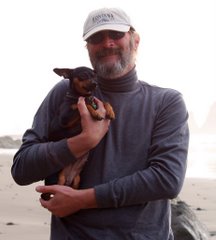“Which is better, Inglistan or Afghanistan?” Imagine yourself as an English journalist, traveling across war-torn Afghanistan in the wake of the Taliban. How do you answer the question? Christina Lamb’s 2002 book, The Sewing Circles of Herat: A Personal Voyage Through Afghanistan, is not your typical travelogue. It is, nonetheless, an extremely important book for anyone who wants to understand the quagmire we entered in October 2001 when we began our search for Osama bin Laden.
I have to admit that I knew next to nothing about Afghanistan on September 11, 2001. I consider myself a peace-loving man. I abhor war and militaristic posturing. Yet my immediate gut reaction as I watched the twin towers collapsing was “Flatten Afghanistan!” And that was before we knew that Al Qaeda was holed up in the mountains of this tragic land.
In the ensuing seven years, I have often rued my reaction, and I have taken advantage of various opportunities to learn more about the country that every major world empire has tried, unsuccessfully, to annex, beginning with Alexander the Great. Alexander went so far as to marry an Afghan princess, Roxanne, the only woman he ever married. But even Alexander could not hold this area, and his son, born to Roxanne, was killed after Alexander died. He did leave his name in the Afghan city of Kandahar.
Genghis Khan brought his army through the area we now call Afghanistan, and one of his descendents, Timur (known in the West as Tamerlane) built a dynasty centered in the region and still considered one the greatest periods of Afghan history. In the 19th Century, Queen Victoria and Tsar Nicholas sparred over the land through their armies, as the Russian Empire tried to expand toward the warm waters of the Persian Gulf and Arabian Sea while Her Britannic Majesty strove to keep the jewel of the empire firmly in British hands. This led to three Anglo-Afghan wars that were disastrous for the British, and subjected the Afghan people to great hardship as well.
In the twentieth century, Afghanistan has arguably been the bloodiest place on earth—at least in terms of length of conflict. 2009 marks the thirtieth year of continuous fighting, if we date the beginning with the Soviet invasion in 1979. Christina Lamb first entered Afghanistan during the war against the Soviet invaders. Over the next twenty years, she made the acquaintance of many people now recognizable as Afghan leaders, including current President Hamid Karzai, King Zahir Shah, and a young woman who wished to be called Marri. Marri was, for lack of a better term, a pen pal, although the correspondence went only one way. Lamb had no way of writing back to the young woman whose letters had to be smuggled out of Taliban controlled Kabul.
The Sewing Circles of Herat recounts Lamb’s travels in Afghanistan, smuggled into the country from Pakistan or from Iran, in the guise of a young boy, a burqa clad woman, and even a pile of blankets and medicine in the floor of an ambulance. She visited Herat in the West, Kandahar in the South, Jalalabad in the East, and of course Kabul. The stories she tells are heartbreaking. Assassinations, murders, executions by the Russians, by various Afghan warlords, by the Taliban. People subsisting on a few pieces of unleavened bread. Roads, buildings, airports destroyed. Schools closed, libraries looted of books which are then burned. Art and historical artifacts destroyed because the ignorant tyrants in power know nothing of history and care less about anything outside their narrow view of religious life. Children’s textbooks that teach numbers by counting “One Kalashnikov, Two Grenades, Three Rifles, Four Armour-piercing bullets, Five 9mm bullets….” (p. 309)
After having read The Kite Runner, Khaled Hosseini’s novel of growing up in Kabul and escaping as the Soviets take over, and his second novel, A Thousand Splendid Suns which tells the story of two generations of Afghan women living through a modern hell, I was ready for something uplifting when I spied The Sewing Circles of Herat on a colleague’s desk. Instead, I spent New Year’s long weekend reading one of the most discouraging books I have ever come across.
And yet…. And yet… There is a sense of hope here as well. It is absolutely astounding what human beings can endure and still survive. It is positively heart-warming what people will do to guard and preserve beauty in the most violent times. And the hospitality of the Afghan people—people who have absolutely nothing, but will stop you on the street insisting that you join them for lunch or dinner. People who live by a code that says once you have opened your home to a guest, it is your responsibility to guard that guest against all others, even if the guest turns out to have harmed your family.
Lamb’s book gives a frank and disturbing look at Afghan history, culture and current events. It does not paint a pretty picture. It will raise many questions in your mind and, if you’re at all like me, will make you wonder if there is any hope for this beautiful and desperate land.
“Which is better, Inglistan or Afghanistan?” Lamb’s diplomatic answer should serve as an object lesson for all of us who would understand the world we live in.
“The question came again and the guard who had asked it had a jagged scar on his right cheek pulling down his eye.
“’Well, Afghanistan is very beautiful and the people are very hospitable. You have beautiful mountains. Also the weather is very nice. But, England has roads, electricity, schools, hospitals, libraries, running water, trains, lots of food….’
“The mujahid looked unimpressed. ‘And how much fighting do you have in Inglistan?’
“’Well, we don’t really. I mean we had a civil war but that was more than 350 years ago and since then people in England have pretty much lived together peacefully.’
“’What if someone was to steal your husband’s gun? By Allah, then he would fight!’
…
“‘He doesn’t have a gun.’
“The men looked shocked, shaking their heads and repeating ‘no gun’ to each other. They all had standard-issue Kalashnikovs slung across their shoulders and wide belts of brass bullets on their waists except for one with a Russian army cap and a loopy grin who was carrying a hand-held rocket-launcher, which to my horror he kept dropping on the ground.
“’How does he protect you then?’ asked the grinning man.
“’I don’t need protecting,’ I replied, trying to look fierce.” (pp 182-183)
The average life expectancy in Afghanistan is 44 years. For the past thirty years, the country has been at war. These people have known nothing else in their entire lifetime but killing, bombs, destruction, death. Where and how do we start to create peace, let alone democracy in such a setting?
I highly recommend the three books shown below, Khaled Hosseini’s The Kite Runner and A Thousand Splendid Suns, and, of course, Christina Lamb’s The Sewing Circles of Herat.
By the way, the title of this post comes from a statement made by Roger Roy, an Orlando Sentinel reporter living with the US Military in Afghanistan. He was speaking of Afghan children in his November 1st, 2005 post which can be found here.




1 comment:
You forgot to mention Greg Mortenson's "Three Cups of Tea".
The country has so many wonderful people and places, if only the evil governments would let there be peace.
Post a Comment